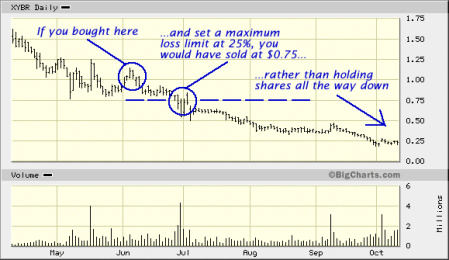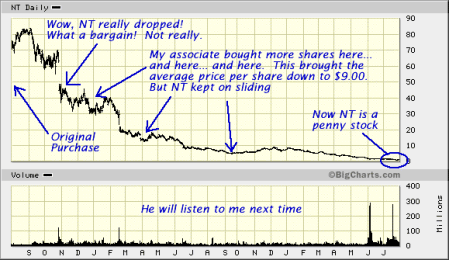


Get Instant Penny Stock Picks from the Authority!Visit www.PeterLeeds.com Right Now!
Professional traders continually make more money than average investors, even when they are trading the exact same penny stock!
There are specific reasons why this occurs, although it is not hard for the less experienced investor to start making the same kinds of gains that the insiders are getting.
Here are a few tips to put you on an even footing with the professionals... and leave all the average investors behind!
Institutional traders watch the activity of a penny stock throughout the day, and take market direction, fresh news, and economic indicators into account. Then, after staying on the sidelines and watching patiently, they start moving in. This can cause the shares to begin to move under the trading pressure that the professionals bring to bear.
Often, the true direction of a penny stock's price is influenced more by the trading in the early afternoon than all of the rest of the day's activity put together.
Tips of the Insiders
As well, holding off for the several hours of trading also allows you to benefit from whatever news and press releases hit the market that day. It enables you, like the insiders, to see how investors react to a specific piece of news, then you can react to the reaction.
In other words, the specific details of a press release, news report, or occurrence is less important than how the market responds to the information. Wait to see what the reaction will be, and then get involved only if it will benefit you.
This is especially important with penny stocks. Many professional traders set maximum loss limits. Often they sell their entire position in a company if the shares fall (for example) 10% below the price at which they had bought. This eliminates any killer 40% or 80% losses, while keeping capital free for subsequent investment in the shares at a later date, or for other penny stocks altogether.

Think of your own personal investment experience. Have you had any losses of greater than 15%? Did the shares rebound or continue to fall. How would your portfolio have performed if your greatest losses had been reduced to 10%?
Unfortunately, keeping to this loss limit is one of the most difficult things for penny stock traders to do. There is always the hope that the shares will rebound, and sometimes they do. However, the key is being willing to miss out on those stocks that do rebound in exchange for never suffering a major capital loss again. The insiders take this trade-off 9 times out of 10.
Our next section is an entire examination of just this one concept, Limiting Losses in Penny Stocks.
Bad investors average down, buying more shares of a sinking penny stock to decrease the average price per share they have paid. This strategy is like throwing good money after bad, and is hardly ever effective. Nevertheless, individual investors seem to continually engage in this practice.

Professionals are much more likely to 'Average Up.' They acquire more shares as the penny stock price climbs and the momentum of the company rises. They see increasing share prices as a confirmation of their research success, rather than a profit-taking opportunity.
Professional investors seldom leave buy or sell orders open past the end of the day. Any number of things can happen which will (or should) influence you to change the price you have put forward. It is never good to commit yourself.
For example, if you are selling and there is a sudden press release which sends the share price soaring, you get bought out at your target price, and miss out while the penny stock continues to rise. However, if you did not have your open order you could have sat back until the smoke cleared, and then made your sale at a higher price.
In addition, there is often a build-up of buy or sell orders for penny stock shares overnight. This is because most investors can only enter their trades after work, and there is no fulfillment while the markets are closed.
This can cause a major problem when the exchanges do open, as a clump of simultaneous buy orders can often lead to a 15 minute pop in share price during this temporary demand (especially with thinly traded penny stocks). If your order is one of these, you may wind up paying more than you had intended.
Generally, after the order fulfillment has recovered the share prices settle back down to their previous level. This also applies in reverse when a lot of sell orders have been accumulated.
To avoid this situation, use limit orders (see below) and use orders that expire at the end of the day, instead of ones that are open over several days at a time.
We have a complete examination of market orders and limit orders with penny stocks in the section on Trading Stocks, as well as below.
The use of limit orders (setting a specific price at which you are willing to trade shares) enables you to protect yourself from the volatility of the stock market.
Especially when dealing with lightly traded penny stocks, a market order (trading shares at the current best price available) can result in paying more than you would have agreed upon. Setting a limit ensures the price point, and therefore protects your capital.
Although market orders usually incur smaller broker commissions, the savings generally fall short of the capital losses brought on by their use.
Market Order You want to trade shares of a penny stock, and are willing to pay whatever the best available price is. You will be assured that you will get the stock, but you have no guarantee of the price you pay.
Limit Order You want to trade shares, but are only willing to make that trade at a certain price per share. For limit orders you need to set a price limit.
| Market Orders | Limit Orders |
| You will take the best available price | You will only buy at the price you stipulate, or one that is even better for you |
| You do not need to specify a price or a time when the order will expire | You must specify the price you are willing to pay, and the date at which your order expires if it is not first filled |
| You instantly get your shares | You may have to wait, or the trade may not even happen at all, if there are not sufficient shares being sold at the price you stipulated |
| You will get all the shares you wanted | You may get a "partial fill" (meaning that you only get some of the shares you wanted) if there were not enough shares for sale at the price you picked |
| You may end up paying more per share than you had wanted, especially if your buy order is large, or the underlying stock is subject to low trading volume | You control the price, and protect yourself from unexpected volatility |
| I highly discourage the use of market orders, especially with penny stocks | I always recommend using limit orders with penny stocks |
Penny stock prices have more to do with investor sentiment than corporate operations. Most investors read a press release and ask, "how will it affect the company's bottom line?" It is more effective to ask, "how will this news affect the way investors see the stock?" or "how strong will the reaction of traders be to this news?"
Trying to make money off of a company's operations is never as effective as making money off of other traders. An increase in earnings does not DIRECTLY impact the value of your portfolio. An increase in the share price due to traders buying up the stock does.
Make money off of the moves of traders, using the underlying companies as a vehicle to enable your penny stock strategy.